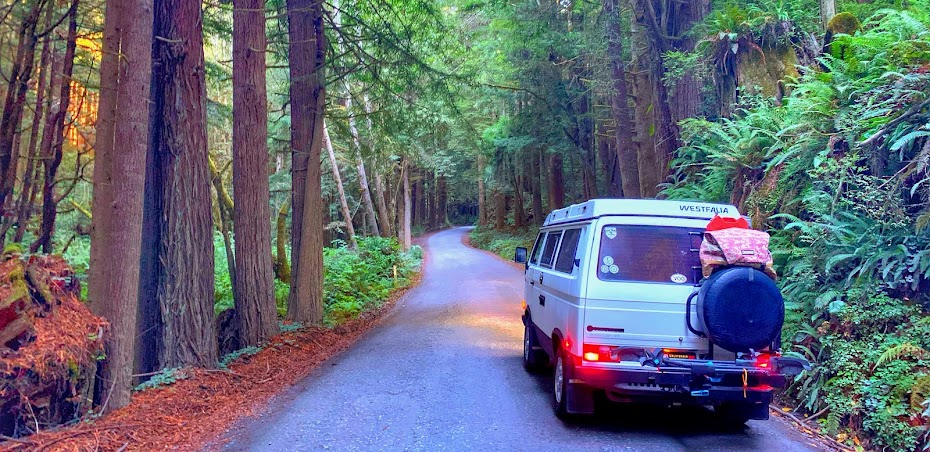I've had a few Vanagons now and I'm quite privy to upper control arm bushing failure. It's an obvious sound and feeling when these little $20 parts go bad and they pretty easy to fix, so I wasn't alarmed when I heard and felt mine rattling around down there on the passenger side.
Because they can really throw off your alignment, it's good to nip them in the bud and swap them out. I ordered up the parts from VanCafe because I was craving big cookie and I needed the parts the next day (they are only a few hours away), and decided to knock it out the next morning.
As soon as I got the van jacked up and had the wheel off the ground, I realized that I had a bit more going on down there. The bushings were snug, but the oval sleeve used mount that the upper control arm bolts to, was separated from the frame mount. Not something I had expected, or seen before.
So, I took a few pics with my phone up in the wheel-well to get a better look (because you can't see the back side of the shock tower) and was baffled as to how I was going to remedy the situation. The area up inside the wheel well is too narrow to get in there with a mig welder and being able to get a good solid weld on there would not be possible even if you could.
So, I called a good friend, also a Vanagon geek like myself, who has a ton more experience with bigger jobs like this, not to mention he's an amazing welder and mechanic. I shared some pics and he decided to come over and take a look.
As soon as he arrived, we agreed the best course of action would be to get it to his house and cut open the floor under the passenger seat so that we can create an access to the shock tower and upper control arm mount.
So, we removed the seat, drilled some holes and carefully cut a 12"x12" opening under the seat with a sawsall.
We were lucky that the mount/sleeve broke off pretty cleanly and we could see exactly where it was supposed to go. We then cleaned up the metal and welded the part back in, but not before adding an extra piece of metal to reinforce the sleeve in the inboard side.
After that, a quick re-install of the control arm and we were done. We eyeballed the alignment and pretty much nailed it, but I'll be getting it aligned pretty soon when I install new suspension components.
All said and done, it was about 6 hours of work, 2 sub sandwiches and the existing bushings didn't even need to be replaced.
We welded the access port back in and cleaned it up with some good Rustoleum pain and you could hardly even tell we were there.




















